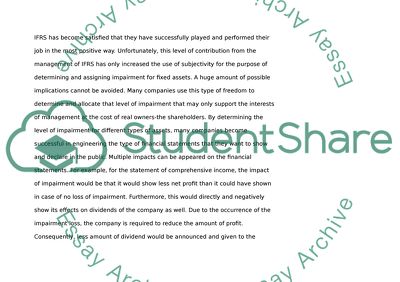Cite this document
(“'In company reporting, the measurement of the amount of impairment of Essay”, n.d.)
Retrieved from https://studentshare.org/environmental-studies/1409261--in-company-reporting-the-measurement-of-the
Retrieved from https://studentshare.org/environmental-studies/1409261--in-company-reporting-the-measurement-of-the
('In Company Reporting, the Measurement of the Amount of Impairment of Essay)
https://studentshare.org/environmental-studies/1409261--in-company-reporting-the-measurement-of-the.
https://studentshare.org/environmental-studies/1409261--in-company-reporting-the-measurement-of-the.
“'In Company Reporting, the Measurement of the Amount of Impairment of Essay”, n.d. https://studentshare.org/environmental-studies/1409261--in-company-reporting-the-measurement-of-the.


